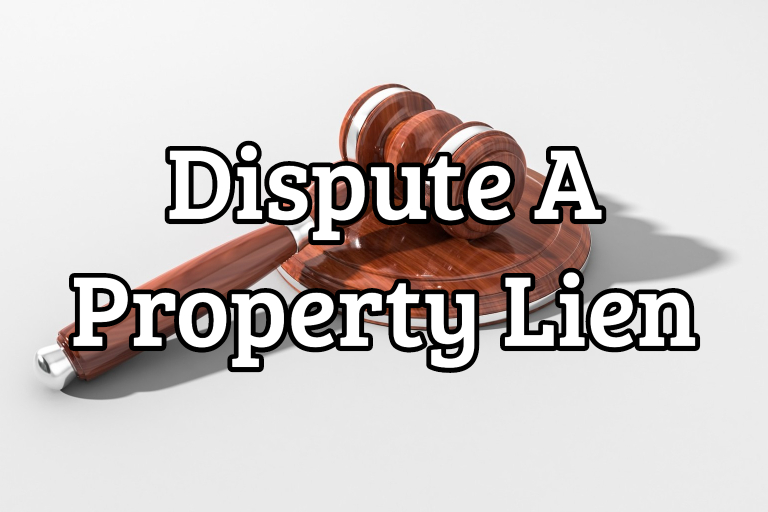HOW TO DISPUTE A LIEN ON A PROPERTY

In order to sell a property the seller should make sure that any and all liens against it are satisfied. This becomes even more important when the situation calls for a quick sale. Knowing how to dispute a lien on a property, if appropriate, could save crucial time in the process.
Some property owners may not be aware that liens can be in place for reasons not related to the property. Examples include a lien placed by the IRS over back taxes or divorce.
Whether a lien is related to the property or not, it must be satisfied in writing. It can be satisfied prior to or during the closing at sale time. Payment of the debt in full, or as agreed to in writing, is necessary. However, the property owner needs a written “letter of satisfaction” as proof to remove the lien.
When a property owner uses a real estate attorney for the lien removal process, that attorney handles the filing. If doing it themselves, the property owner should visit the County Clerk office to show cause for removing the lien.
IF MULTIPLE LIENS ARE INVOLVED
In the event of more than one lien to clear up, each lien must be processed separately. This is the case whether the lien is against the property or not. Any lien against a property must be filed within the county the property is located in. This is the case whether on Staten Island or anywhere else.
Sometimes a property owner winds up in a dispute against the lien holder over the amount. For example, suppose a contractor appears to have tacked on thousands of dollars to the original bill. The issue could be defective work or a lack of fulfillment. It could happen where the entire amount due was paid off prior to the lien. Just like with credit card transactions, the property owner has the legal right to dispute a lien. This is why knowing how to dispute a lien on a property is so important.
Although a real estate attorney is suggested to handle dealing with liens and disputes, there are courses of action. The property owner must issue a written notice of dispute of the lien. The concern should be spelled out as thoroughly as possible.

DOCUMENTATION TO PROVE DISPUTE
A property owner disputing a lien on their own should provide the lien holder with as much documentation as possible. Providing the holder with proper channels to respond is likely to help in the process. The disputing party needs to show exactly how and why the lien is improper.
Perhaps the property owner has an itemized bill or documentation to include to dispute a lien on a property. These can be used to calmly introduce cause to negotiate a settlement or other resolution. A lien holder has the ability to remove the lien if and as it sees fit.
Resolving a dispute on a lien is necessary in order for the subject property to close and be sold. This is the case whether a real estate agent is involved or not, even if there is an all cash payment involved.
Consequently, the window of opportunity to dispute is of the utmost importance. Suppose the disputed amount is $10,000. If a property owner does not challenge in time, they would have no choice at the closing. They either pay the additional $10,000 or lose out on the sale of the property.
In the event a property is under joint ownership, a title search is extremely necessary. There could be the need to dispute a lien on a property if placed against one of the partners. Suppose Bill, Bob, and Brad co-own a property. If Brad has a lien against the property which he disputes, Brad needs to take action. If he fails to dispute, the lien stands as is. This could delay the closing and/or cost the entire partnership the additional undisputed funds.
Knowing how to dispute a lien on a property in time could have a positive impact at selling time.
